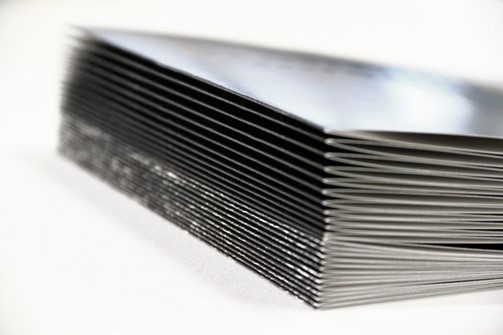With the explosion of digital printing comes an ever-growing need for creasing. Cracking along the fold is a major headache for any print manufacturer. There is nothing worse than creating a beautiful, printed piece only to have the final look marred by unsightly cracking. Creasers eliminate cracking and protect the final look.

Creasing is very different from scoring, even thought both techniques are intended to protect a folded edge. For years with offset printing scoring was perfect. Ink soaks into the stock so although fibers may be cracking when the sheet is folded, the end product still looked great because there was no break in the color.
In today’s world of digital printing, in which toner lies upon the surface, we have to take a more aggressive approach to preparing sheets for folding. Creasing implied the use of a dedicated creasing matrix with a channel and dye. The two sandwich the sheet and create a strong crease in the sheet, so that fibers do not break during folding.
Creasing and scoring are terms that are often used in place of one another but the truth is that they are quite different. Scoring is done with a rotary wheel that applies acute pressure to stretch paper fibers along a fold line. Creasing provides a much more pronounced affect by using an anvil and dye to strike the sheet.
What is Paper Creasing
Paper creasing the more modern method of preparing paper for folding. Creasing is done with a die matrix that has a male and female tool. The end result is a very consistent crease that will almost never crack. Paper creasing dies come in various sizes with something around 1.2 mm being a standard crease. A thicker paper may use wider crease such as 2 mm.
What is Paper Scoring?
Scoring is the old fashioned way of preparing paper to fold. This method uses a blunt blade to plow a score down the sheet as it passes by. With traditional ink on paper printing this was usually enough to make a fold look nice. Modern printing processes that use toner on the surface of the sheet scoring is not always enough to eliminate cracking.
The boom of digital printing the market demand for creasing has been growing up too. Digital printing done with toner requires creasing over scoring due to the fact that toner lies on the surface of the printed sheet. In traditional offset printing with wet ink, the pigments will absorb into the stock. For that reason, scoring was usually enough to achieve good results. Even if the sheet cracked a little bit, it would not expose white paper fibers and diminish the final appearance.
Creasing Dye Matrix

The core of every creaser is the dye unit. This is an assembly that impacts the stock to create the crease. It will always consist of an upper and lower dye that come together in a matrix to imprint the crease pattern onto the sheet. The width of the channel within the crease matrix dictates the width of the crease. In general, narrow machines come with a standard dye but will have optional narrow and wide dyes available for special applications.
Check out Horizon’s CRF-362 Creaser Folder
Mid-State Litho, Inc.
5459 Fenton Rd.
Flint, MI 48507
midstatelitho.com

